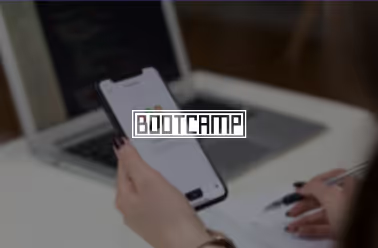Wireframing & Prototyping That Bring Ideas to Life
Bring your vision to reality through quick iterations and user‑focused prototypes. Our team takes your rough concepts and turns them into interactive experiences that stakeholders and users can understand and enjoy.




























































What Sets Us Apart
Wireframes give you a clear picture of layout and structure before you invest in development. According to Justinmind’s UX guide, wireframes are “low‑fidelity, basic layout and structural guidelines” that outline how your product will work. We help you make informed decisions early, avoiding costly rework later.
Prototypes let you test ideas quickly. From simple sketches to high‑fidelity models, we build interactive prototypes that reveal user behaviour and highlight improvement areas. Our rapid process shortens feedback cycles so you can move confidently from idea to build.
Whether you’re crafting an MVP or refining a complex workflow, our prototypes scale with your ambitions. We create modular designs that adapt as your product grows, saving time as features evolve.
Our approach
We start by listening to users and stakeholders to define goals and uncover real problems. Through research and analysis, we build a foundation for meaningful solutions that connect with both business and user needs:
- Stakeholder interviews & user research
- Journey mapping & insight gathering
- Market analysis & opportunity definition
- Goal alignment & strategy development
Understanding Your Users & Business Goals
- Stakeholder interviews and business objective mapping
- User interviews and behavioral analysis
- Competitive landscape assessment
- Technical architecture review
- Analytics audit and user journey mapping
Deliverables:
User personas, journey maps, opportunity matrix
Wireframes evolve into realistic, clickable prototypes. These allow users and stakeholders to experience interactions firsthand, making it easier to test, refine, and align expectations early in the process:
- High-fidelity prototyping & interaction design
- Usability testing & feedback collection
- Visual detailing & motion principles
- Stakeholder presentations & alignment sessions
We validate designs through real-world testing, gathering both qualitative and quantitative data. Insights from users shape refinements and confirm that the product solves the right problems effectively:
- User testing & behavioural analysis
- Feedback synthesis & design improvements
- Iteration planning & prioritisation
- Continuous validation & learning

Our Process
- Stakeholder workshops
- User interviews
- Competitive and market analysis
- Success-metric definition
- Screen mapping and content hierarchy
- User-task prioritisation
- Early alignment across teams
- Detailed, interactive prototype creation
- Realistic simulation of final product
- Usability testing preparation
- Observation of user interactions
- Identification of friction points
- Iterative improvements until intuitive flow achieved
- Design specifications and asset preparation
- Developer collaboration and QA support
- Continued updates and enhancements
Our Case Studies

MVP for Behaviour‑Driven Health
Lume Health needed an MVP that would turn complex light‑exposure science into simple, actionable insights while capturing the interest of early adopters and investors.
Lume Health needed an MVP that would turn complex light‑exposure science into simple, actionable insights while capturing the interest of early adopters and investors.
We ran rapid discovery, created low‑fidelity wireframes to map user flows, and built an interactive prototype that translated scientific data into clear feedback. Our design included habit‑building mechanisms and personalized nudges to encourage behavioural change.
The prototype enabled Lume to gather early feedback, secure investment and launch a beta program. Founder Vicki said that our quick iterations with user testing helped them get to beta faster and that the team was “excellent in helping us bring our vision to life”.

Streamlining AI Content Workflows
SaaS teams needed an intuitive interface to manage AI‑powered content operations. Complex workflows made it hard for non‑technical users to get value quickly.
SaaS teams needed an intuitive interface to manage AI‑powered content operations. Complex workflows made it hard for non‑technical users to get value quickly.
Parallel designed wireframes and prototypes that abstracted away AI complexity while allowing power users to customize. Modular components ensured the product could scale across different SaaS platforms.
The final product reduced onboarding time by 40%, saw 85% adoption of advanced features and achieved a 90% customer satisfaction score. (Data from client report.)

Accelerating Consultancy Workflows
Consultancies needed to harness advanced AI tools without overwhelming professionals. The platform had to support everything from simple tasks to intricate workflows.
We developed a progressive disclosure interface and interactive prototypes that guided users from basic actions to sophisticated AI capabilities. Clear information hierarchy and inline hints reduced cognitive load.
The redesigned experience led to 60% faster project completion, a 95% user retention rate and a 35% increase in feature adoption.
Our tools and methods
 Figmafor collaborative wireframing and prototyping
Figmafor collaborative wireframing and prototyping FigJamfor workshops and ideation sessions
FigJamfor workshops and ideation sessions Principlefor advanced interaction design
Principlefor advanced interaction design Mazefor remote user testing and validation
Mazefor remote user testing and validation Notionfor documentation and project management
Notionfor documentation and project management
- Design sprintsfor rapid concept validation
- User interviewsfor qualitative insights
- Usability testingto uncover pain points
- Analytics reviewfor data‑driven decisions
- A/B testingfor performance optimisation
Why Choose Parallel for Wireframing & Prototyping
Over a decade of work across SaaS, fintech, health and AI gives us insight into what works and what doesn’t.
Our prototypes have helped companies decrease onboarding times, increase adoption and secure investment.
We work closely with your team through regular check‑ins and transparent communication. Our process is collaborative, not siloed.
We design flexible, modular systems rather than isolated screens. This ensures coherence as you expand and iterate.
We’ve been featured around the world


FAQs


















